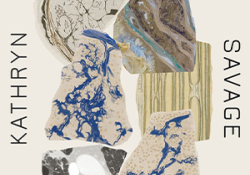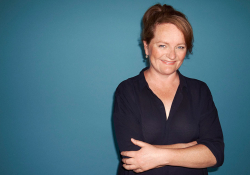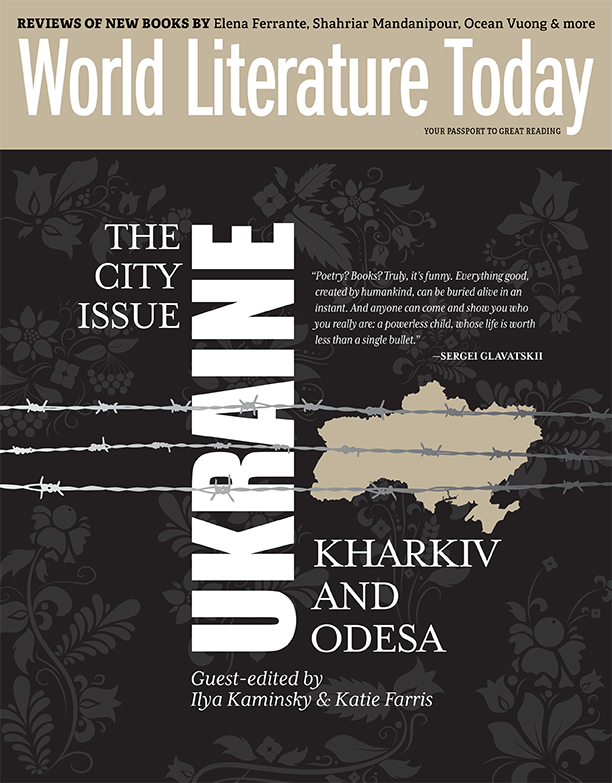The Long Night
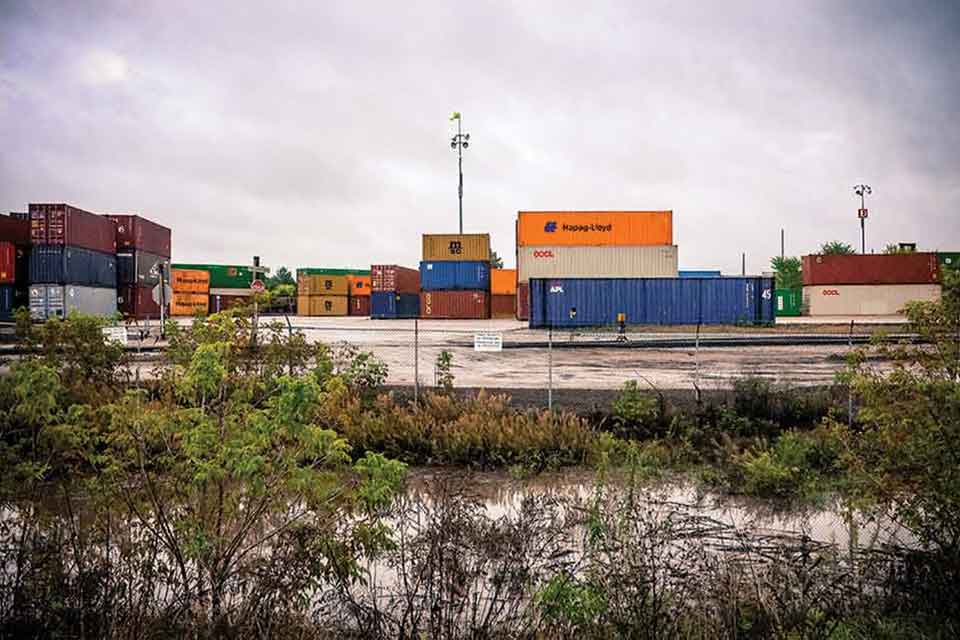
Can healthy fruits and vegetables grow on polluted soil? “The Long Night,” from Kathryn Savage’s forthcoming Groundglass: An Essay, confronts the transgressions of US Superfund sites and brownfields against land, groundwater, neighborhoods, and people.
The harm dragged on, spilled, emptied, but first day slipped into humid night and the seventy-two-car freight train moved northeast from North Dakota carrying nearly eight million liters of shale oil up into Canada, where the driver stopped for the night to rest in town, where all the rail yard attendants left the yard to sleep, where later, the unsecured tank cars moved as if waking, breached and derailed and exploded, killing forty-seven people in Lac-Mégantic.
It was supposed to be just a stopover for the eight million liters of shale oil that night; the town, by then, was used to trains hauling Bakken Formation crude, the transitory constancy and dull rumblings. It was Saturday, around one in the morning in the city of nearly six thousand. Music from downtown pubs lifting over those who were still out, bare-armed and smoking and dancing.
The disaster destroyed more than thirty buildings. Lac-Mégantic decided to flatten the still-contaminated downtown, which had continued to soak oil after the crash: six million liters, what hadn’t gone up in flames. Wrecked but not destroyed, some of the Lac-Mégantic businesses impacted by proximity to the crash opened their doors for the eight hours before they were set to be flattened.
Some chose to visit sections of their downtown, see shop owners they were on friendly terms with, in a gesture of collective mourning.
Other gestures like this would come later: galleries, on the anniversary, showed floor-to-ceiling framed photographs of the town and its citizens before the derailment. There were consequences of trauma. From a mental health study conducted in town after the crash: 25 percent of the children surveyed showed symptoms of post-traumatic stress disorder, and the rate among adults was 50 percent; 39 percent of teenagers had suicidal thoughts, a rate twice the Quebec average. Solidarity and the pain of grief rose up in the days and months and years after the town was thrust into immediate and communal violence. A plurality of death, night of terror, a cruel night. People who loved each other and loved this place absorbed all that they had so suddenly lost together.
This wasn’t any grief; it was oil grief; it was capital grief.
In their night sky installation, Black Shoals Stock Market Planetarium, London-based artists Lise Autogena and Joshua Portway projected starlight on the inner sphere of a dome. They placed beanbags underneath, where viewers could lean back and look up.
The constellations did not reflect suns or planets but instead publicly traded companies: a computer program turned the live financial activity of the world’s stock exchanges into stars. The market slumped and the bright lights faded; a good day of trading, and the stars shined brightly. When I look up at night I see stars and planets, airplanes and satellites, astral bodies and industry; sometimes I cannot tell the real from the manufactured. The artists’ installation imitates the co-opting of nature for corporate financial gain, critiquing the long capitalist history of colonizing and transgressing people and environments.
The night sky installation hides the market that controls the sky. It performs an obfuscation. After the train derailment, three men sat trial—a train driver and engineer, a man in charge of rail circulation, and a manager of train operations—but not railway executives. It was wrong that they were the only ones to sit trial, and incomplete. How many lines of blame should be followed like track after such a violence? How wide is the reach of this disaster?
How many lines of blame should be followed like track after such a violence?
My friend Gudrun says, while we walk our dogs through our neighborhood, “It’s the same violence here. Just a matter of time before one of these trains derails.” Around us, tankers full of liquified petroleum gas rumble past. The black cylinders are sleek as stones. There are fifty, there are one hundred, there are so many that I lose count while we walk our dogs the zigzagging blocks.
For the length of time I’ve lived here, seven years, I have admired the community gardens on our walks. These spaces aren’t grids of single-family homes with fenced yards and racist covenant–laced pasts but instead a kind of visual abundance: good-smelling flowers, vines dripping fruit. For the relatively modest price of water, under one hundred dollars a year, anyone can plant here. So people come to grow.
Many community gardens in Minneapolis are located on throwaway slivers of corporate-owned grass. Beside Shoreham Yards sits the Shoreham Community Garden. The garden over in Marshall Terrace, with good free mulch, is on land owned by Xcel Energy. Brown, leaf-strewn mounds, trees gone to mulch, face the imposing Riverside Generating Plant, a combined-cycle powerplant on the banks of the Mississippi River built first as a coal station and later converted to natural gas. Just offshore from the plant, a noisy heron rookery has overtaken a slip of river island.
When I walk by these gardens I see people of various races and genders and ages planting, and sometimes we wave to each other. Gentrification is evident here, tall condos sprouting up along the rail yards and the river, but the gardens seem to me to hold a different potential, evidence of a different ecological relationship with place.
Perhaps they are closer to what bell hooks writes about in her essay “Again—Segregation Must End” on the culture of places where care can be seen on full display. Hooks writes, “Those of us who truly believe racism can end, that white supremacist thought and action can be challenged and changed, understand that there is an element of risk as we work to build community across difference. The effort to build community in a social context of racial inequality (much of which is class based) requires an ethic of relational reciprocity, one that is anti-domination. . . . Living in a community where many citizens work to end domination in all forms, including racial domination, a central aspect of our local culture is a willingness to be of service.”
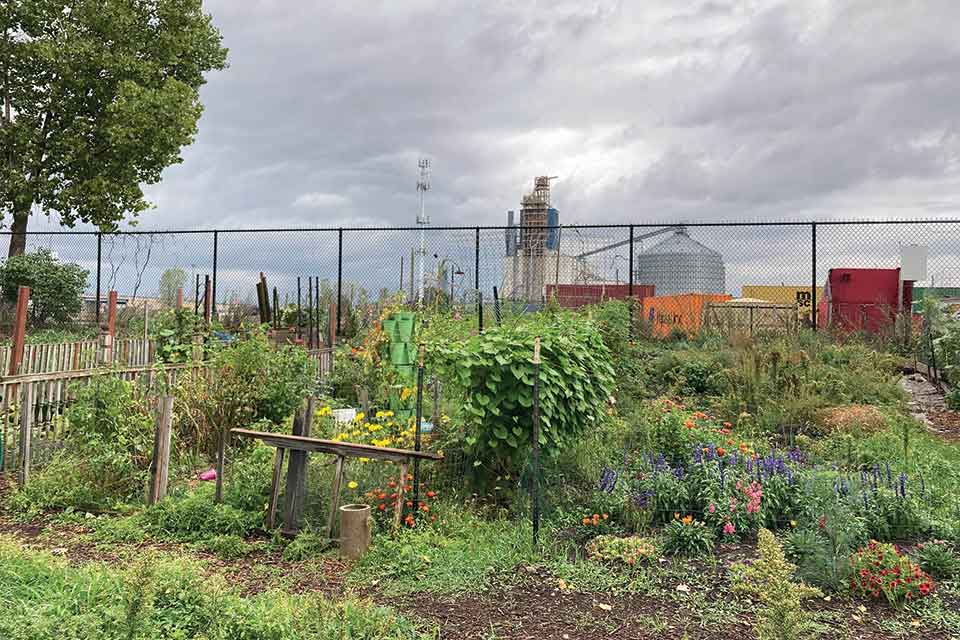
I see the gardens as anti-domination; places where people come together across difference to be of service to soil.
I see the gardens as anti-domination; places where people come together across difference to be of service to soil.
One day, I get a call from Evie, the garden manager. My name has risen to the top of her wait list. A plot is open, and do I want it?
What I want is to be in a better ecological relationship with where I live. I imagine growing tomatoes on the rail yard’s property and then placing a sign by the vines that reads, “Free, please take.” I wonder if what I could grow from this brownfield, despite my intentions, would hold chemicals at high concentrations in fruit and vegetable skins. If what I could grow would sicken.
The complexity of good plants growing in polluted soil is something that Mary Siisip Geniusz writes about in Plants Have So Much to Give Us, All We Have to Do Is Ask, her book of Anishinaabe botanical teachings written with both Native and non-Native gardeners in mind. On the potential medicinal dangers of picking roadside mullein, Geniusz writes that, with slime molds being the one exception, “Plants cannot get up and move, with only one exception that I know. Because they cannot move, they are forced to take up whatever is in the soil where they are growing. If good things are in the soil, they soak up good things. If poisons are in the soil, they have to take up the poisons.”
On a bright October day, I meet Evie in the garden. We walk through rows of beans and late-season blooms. She tells me how long she’s been gardening here, two years, and as we walk she pauses to pluck tomatoes from the vines lining her plot. My purse swells with green zebras, tomatillos, purple-stalked kale. She is kind in a way that overwhelms me. We wear masks. The Covid-19 pandemic surges and it has been many months since I’ve walked through a garden with anyone. Slow-moving trains behind the chain-link at Shoreham push on, slate black against the sky.
My purse swells with green zebras, tomatillos, purple-stalked kale. She is kind in a way that overwhelms me.
This garden has thirty sunny plots, she says, as we pass tarped topsoil underneath the shade of apple and cherry trees. I ask who else gardens here. “Many of the garden plots are leased by first-generation immigrants,” she says. “They’ve been gardening these plots for twenty-odd years.” When she posts signs about issues pertinent to the garden on the wooden community board at the center of the maze of plots—a note about the all-garden fence-building day, a reminder not to use pesticides—she posts them in six languages, including Ukrainian. Three generations of Ukrainian gardeners grow over several plots, she tells me.
It’s chilly as we walk and talk voles and mice and potato tubers. A few other gardeners are out, watering and weeding. She waves and they wave back. When she points to a patch of chernobyl, I repeat back the word, surprised to be saying it here, and she smiles. “I’ve learned the Ukrainian word for lots of plants. I mean mugwort. See that bunch there?”
The Chernobyl Nuclear Power Plant derives its name from the Ukrainian word for mugwort, a black-stalked, clump-forming perennial. In 1986, when a nuclear accident occurred at the No. 4 reactor in the Chernobyl plant near the city of Pripyat in the north of the Ukrainian SSR, it launched the word chernobyl out of the realm of garden perennials and into the linguistic arena of synonym, shorthand for ruin. Chernobyl now means “toxic” and has become inextricable from one of the worst nuclear disasters in history.
To say “chernobyl” in the garden, though we are merely discussing the presence of mugwort, feels like speaking in prescient metaphor.
I tell Evie that my own ancestry is partly Ukrainian Jews. That it might be nice to learn plant names in Ukrainian, were I to garden here next spring.
I tell Evie that my own ancestry is partly Ukrainian Jews. That it might be nice to learn plant names in Ukrainian, were I to garden here next spring.
Behind us, crude tankers cut the horizon. The sun is beginning to set over them.
I think of ecotones, a diversity of systems edging up against each other. This garden that sits above a polluted groundwater aquifer and shares a fence line with decades of industry.
I ask Evie if she knows why so many community gardens around us are on corporate land, and she laughs back and says, “What isn’t owned by the railroads in this neighborhood?” I ask if she’s worried about soil toxicity—if this soil has ever been tested for arsenic, volatile organic compounds, lead. She shrugs and her cheeks bunch behind her mask in a polite smile, “I’m not all knowing.” I dig my hands into my coat pockets and worry a hole at the bottom of one side. I stick my finger into the lining where there’s the outline of wool and then nothing. My questions about the rail yard and its toxic legacy feel pretentious and academic in the garden.
I leave with no answers but tell her I’d like to water, plant, and tend a plot here next spring; I leave with Evie’s gifts. Hefty tomatoes, delicate lantern-skinned tomatillos, basil. Bunched on my car’s passenger seat, the green and purple bounty is glossy as velvet and looks terribly delicious in the day’s dying light.
Minneapolis
From Groundglass, forthcoming from Coffee House Press. Copyright © 2022 by Kathryn Savage. Published by arrangement with the author.

